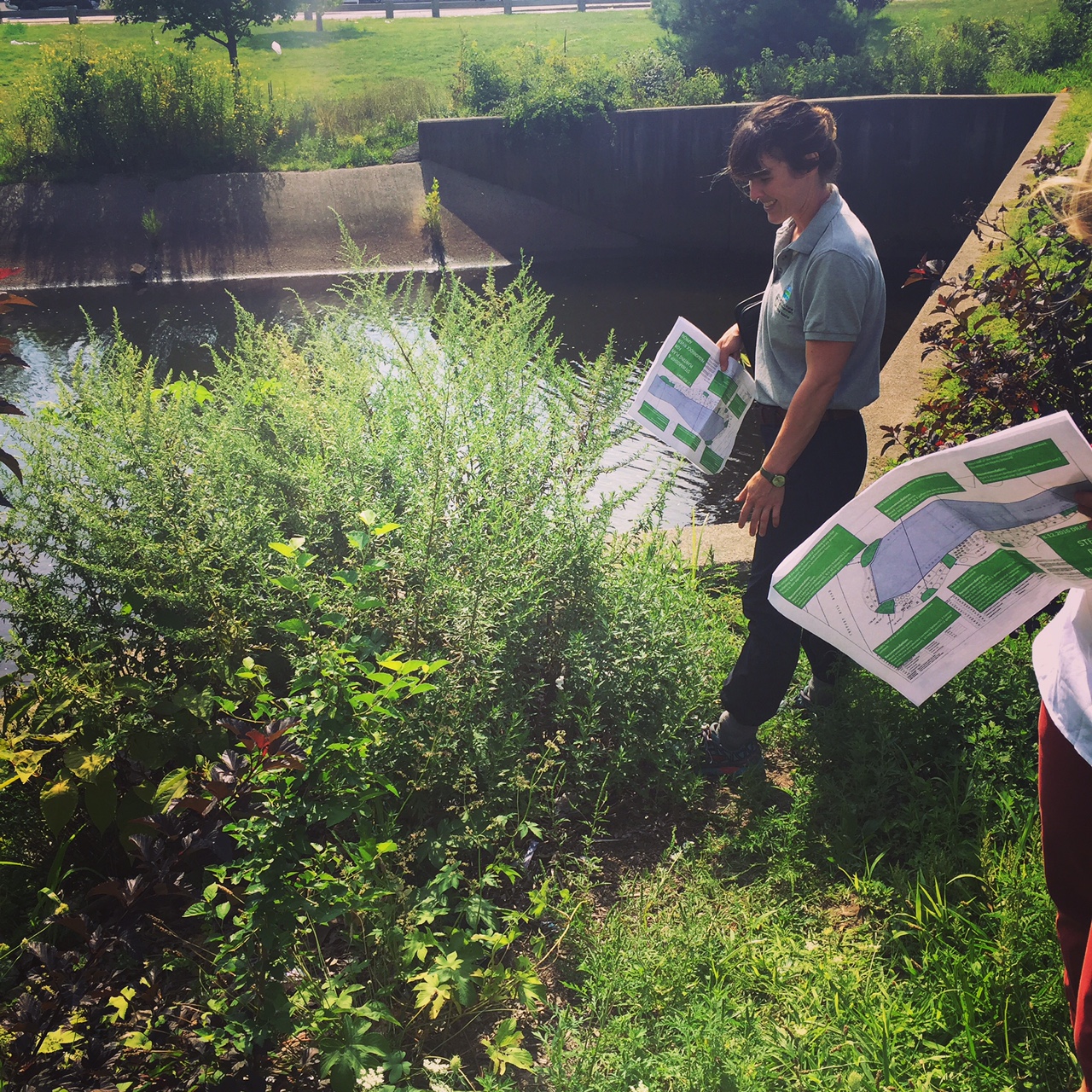
It’s World Water Week 2016 and thought leaders from around the world are gathered in Stockholm, Sweden, for the annual collaborative water conference. Designed as a place for innovators and decision makers to share ideas and develop solutions to the world’s water-related challenges, this year’s conference focuses on water for sustainable growth.
Each year, our Green Projects team develops and implements a number of green infrastructure solutions designed to address water-related challenges throughout the state. In urban areas with lots of pavement, like Bridgeport and New Haven, green infrastructure plays a major role in managing stormwater and making sure growth is sustainable.
During a recent visit to Bridgeport, our team took a close look at the progress of our green infrastructure initiatives addressing the health of the Pequonnock River.
***
It’s a balmy day in late August and the Beardsley Zoo parking lot is bustling with cars, strollers, and golf carts-turned-utility vehicles for zoo staff. Cicadas buzz and staff radios crackle at the popular tourist destination in Bridgeport, Connecticut. A group of us from CFE/Save the Sound are gathered on the edge of a round, rock-rimmed garden in the middle of the lot. Kendall Barbery, Green Infrastructure Program Manager for CFE/Save the Sound, hands each of us a colorful map before stepping into the rain garden, moving between baby shrubs and grasses with careful steps. She points out the plants that were put into the ground intentionally — and those that invited themselves to the plot.
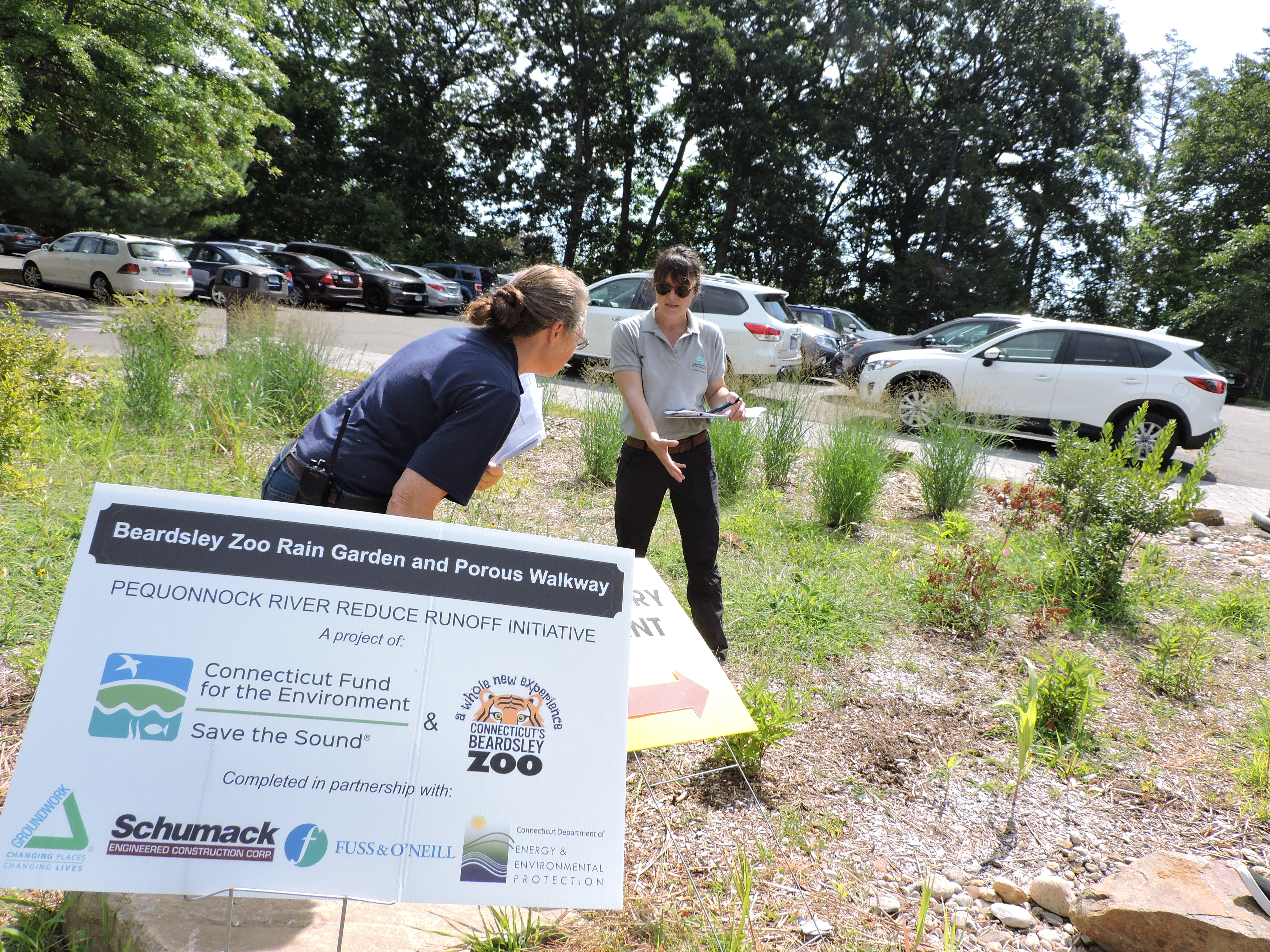
Jeanne Yuckienuz of the Beardsley Zoo crosses the lot and joins us in the sun. “You’ve got kale!” Kendall tells her, pointing down at the familiar purple-green leaves of the rock-star vegetable – a European native – growing at the edge of the garden. “I have no idea how that got here,” Jeanne replies, shaking her head at the mystery of seed dispersal.
Members of the Green Projects team came to check the status of a rain garden and porous walkway installed in the zoo’s parking lot last spring as part of our ongoing effort to improve the health of Connecticut’s waterways through green infrastructure initiatives. Green infrastructure refers to the practice of utilizing nature in infrastructural systems, like stormwater management, and many of our green infrastructure sites are designed to be passive. “We’re giving nature a boost, and then letting her do the rest,” Kendall says.
During a storm, rain flows over hard surfaces like the zoo’s parking lot, picking up dirt, oil, and debris as it runs off the land and into the Pequonnock River and Long Island Sound. Rain gardens and porous walkways help collect and filter storm water as it soaks into the ground, reducing pollution and lowering flood risks. We work with project partners like the Beardsley Zoo to better understand maintenance needs, and assist with a small amount of rain garden maintenance to help new plants get established. We visit our sites frequently to see how they are performing, which helps us to develop better designs and educate others about best practices.
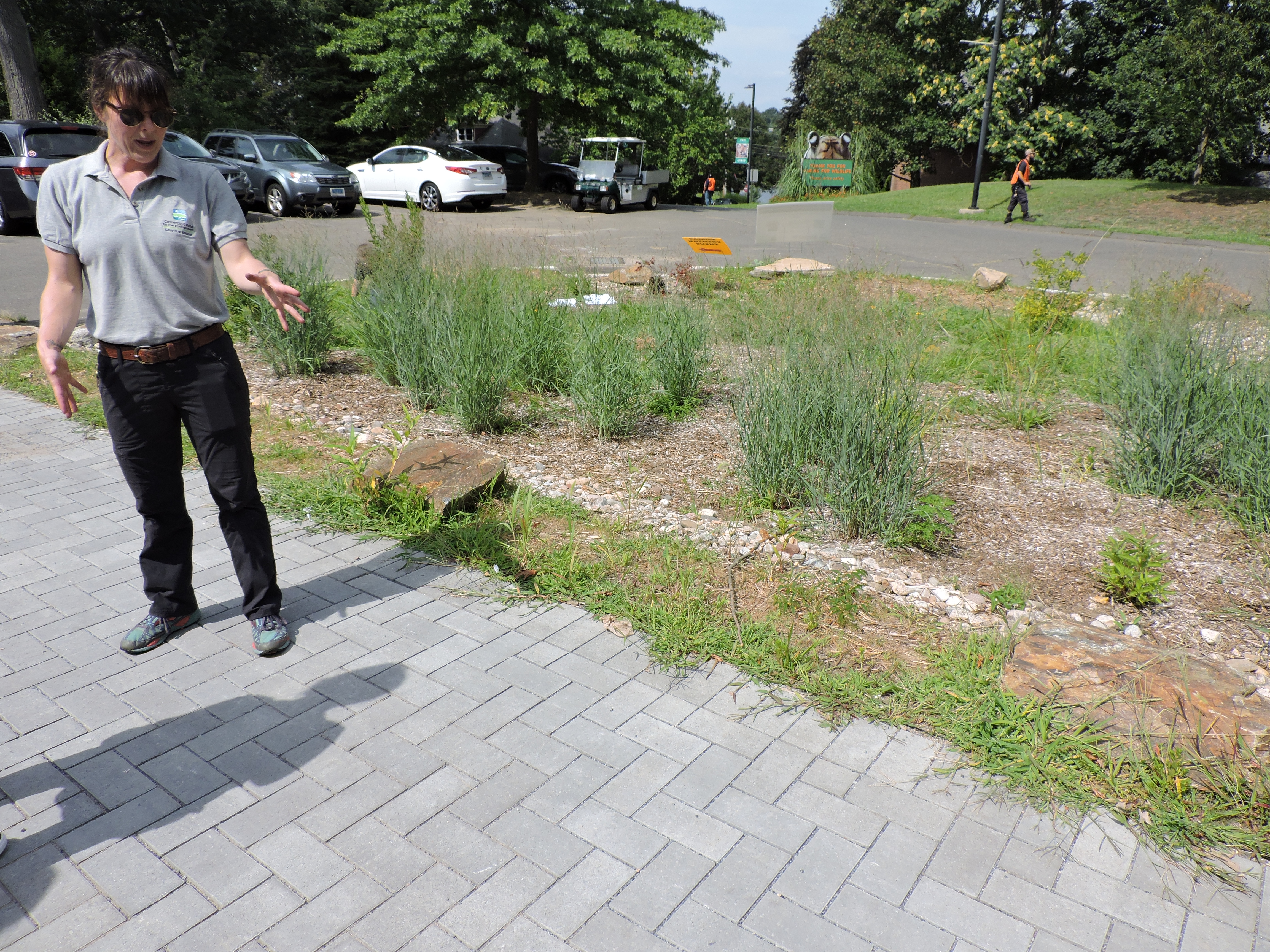
Once construction completed back in April, we led a youth education workshop teaching teens about green infrastructure. After the workshop, 30 local youth from the Beardsley Zoo Conservation Discovery Corps and Groundwork Bridgeport put what they learned into practice, planting water-loving native shrubs and grasses in the raingarden to help aid the filtration process.
Today, we’re pleased to see the rain garden preforming as designed. Kendall takes note of which plants are thriving, making plans for another planting coming up this fall. Ongoing involvement with our green infrastructure projects leads to a number of new educational opportunities, and we love sharing these opportunities with our members and volunteers!
***
The Beardsley Zoo sits on an elevated plot of bedrock, so the stormwater that runs over its parking lot moves quickly down towards Bunnell’s Pond at the base of the hill. The far end of the pond is rimmed by a dam, over which water flows into the Pequonnock River and eventually on to Long Island Sound.
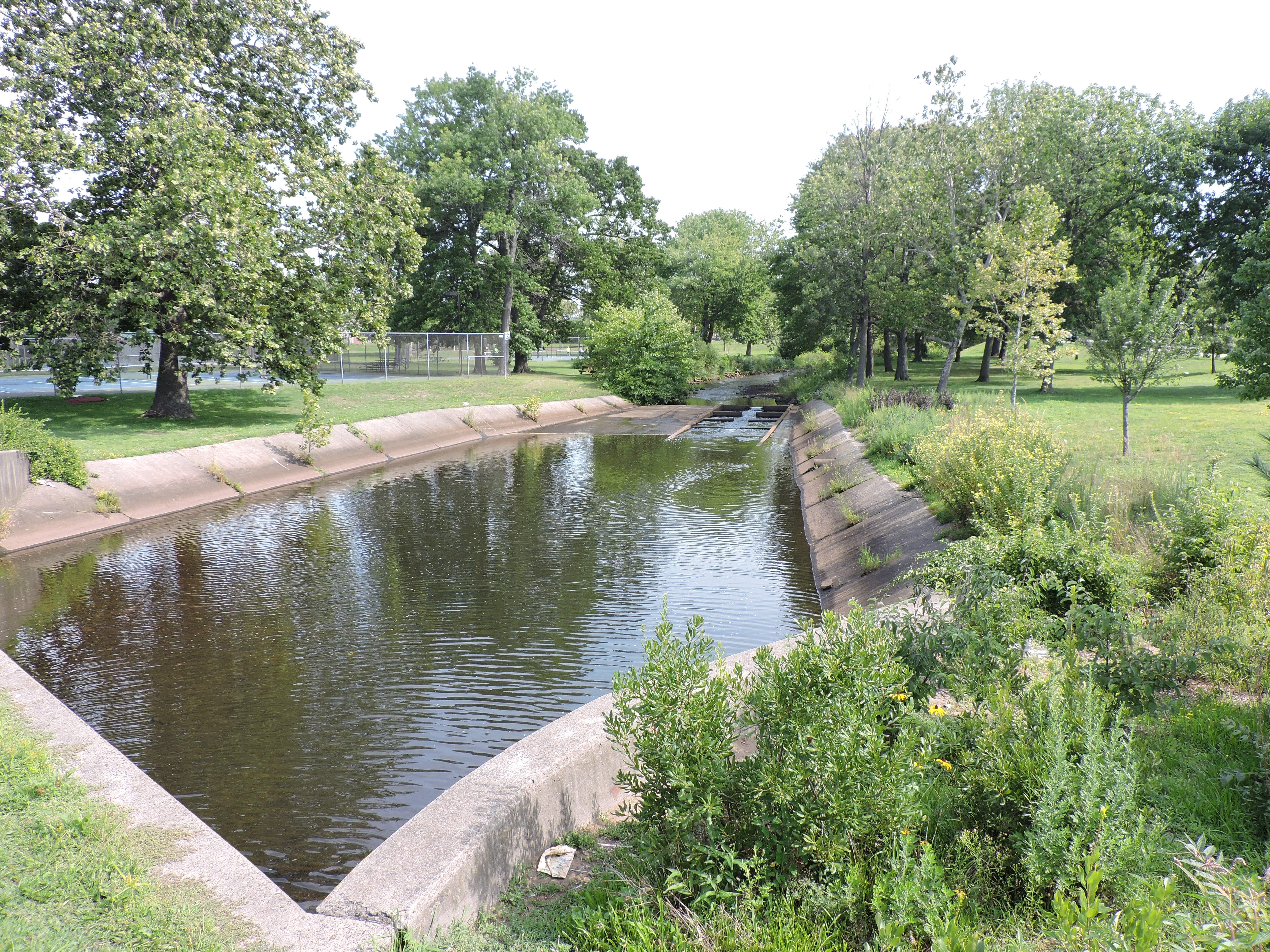
We stop by another green infrastructure site to check its progress. Behind a “Welcome to Bridgeport” sign on a busy roadway, near tennis courts and an ice rink, bushes, shrubs and grasses are thriving on the bank of the Pequonnock River. This is the site of our 2013 fish passage installation that allows blueback herring and alewife to safely get upstream to their spawning grounds past a troublesome concrete apron. (Read more about that project here.) In May 2014, we hosted a plant-a-thon event here in which our volunteers put 2,100 native plants into the ground. Riverside plantings like this help stabilize the riverbank, filter stormwater runoff, and provide wildlife with food and shelter.
“The beauty of rain gardens and other green infrastructure is that they are mostly above ground, so they’re visible. And because rain gardens are visible, they’re not only fairly easy to maintain, they are also great tools for educating people about sustainable water management,” Kendall says. “The plants are the icing on the cake.”
***
Thanks to the help of our amazing volunteers, these green infrastructure projects are helping build a more sustainable future for our urban communities and improving the health of Long Island Sound. We hope to see you for our upcoming volunteer stewardship events in Bridgeport! Stay tuned for registration information.
Funding for the Beardsley Zoo green infrastructure project was provided by Connecticut Department of Energy and Environmental Protection, Fairfield County’s Community Foundation, Jeniam Foundation, and Werth Family Foundation.
The Pequonnock River Apron Modification Project was funded by the National Fish and Wildlife Foundation’s Long Island Sound Futures Fund, Long Island Sound Study, CT DEEP, Restore America’s Estuaries, NOAA, and the Jeniam Foundation.

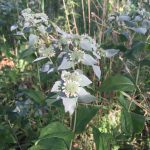
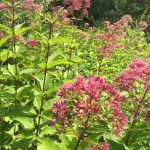
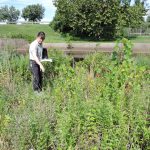
4 thoughts on “Tigers and Rivers and Rain Gardens, Oh My! Green Infrastructure on the Pequonnock River”
Comments are closed.